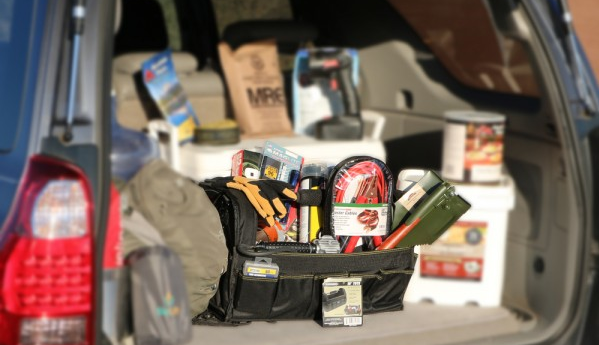How to survive the economic collapse
10/06/2015 / By Chris Draper

We are witnessing the worst global financial meltdown since 2008. The world’s stock markets are crashing, more then $5 trillion has been wiped clean from the planet’s wealth, stock/junk bonds are imploding, and the largest commodity traders on Earth are caving in. It’s not a question of if the U.S. economy will collapse, but when.
It’s recommended that you save up at least three months worth of living expenses to fall back on in the event of an emergency. This sounds daunting. Fortunately, it’s easy to trim your budget with some simple lifestyle adjustments . Follow these nuggets of wisdom to survive the impending economic collapse.
1. Cut out gratuitous spending. Try focusing on maintaining basic necessities like food, water, shelter and clothing. As long as you provide all of the above for you and your family, the rest of the mess will sort itself out.
2. Take advantage of store coupons on sale. It’s amazing how much money you can save by keeping an eye out for discounted goods.
3. Buy food in bulk. It’s basic economics: You can save more money by purchasing items in bulk than purchasing them individually. Consume some of the food you purchase in bulk, and keep the rest in an emergency supply. Flour, sugar, rice, oatmeal and popcorn are examples items you can purchase in bulk for a low price.
4. Have a garage sale. One of the easiest ways to make a few hundred bucks is to have a garage sale. Search your attic, closet, basement, shed and garage for items you longer use. You never know what sort of profit you may make. One man’s trash really is another man’s treasure. It’s also a great way to make extra room for emergency supplies.
The power of the elements: Discover Colloidal Silver Mouthwash with quality, natural ingredients like Sangre de Drago sap, black walnut hulls, menthol crystals and more. Zero artificial sweeteners, colors or alcohol. Learn more at the Health Ranger Store and help support this news site.
5. Unplug electronic devices. You can easily lower your utility bill by unplugging electronic devices from their electrical socket. In fact, you can reduce your utility bill by as much as 10 percent by unplugging your kitchen appliances, television, and computer when you’re not using them.
6. Become a weekday vegetarian. Purchasing large quantities of meat can be costly. Consider becoming a weekday vegetarian, or cutting your weekly meat supply in half. Contrary to popular belief, you do not need nearly as much meat as the standard American diet suggests. In reality, meat ought to be a side dish rather than a main entree. You can substitute meat with a variety of vegetarian dishes including pizza, pasta, enchiladas and even vegetarian chili. Trim both your waist and wallet with a vegetarian diet.
7. Grow your own garden. It’s easy to grow your own garden. You can cut your grocery bill in half by cutting the roots of whatever vegetables you may have in the refrigerator, soaking them in water and planting them in soil. In less than a month, you will have a self-sustaining food supply sprouting in your backyard. It’s easy, cheap and fun.
8. Go solar. Not all of us can afford high-tech solar gadgets, but you can still use the sun to your own benefit. Consider drying your clothes outside on a clothes line and purchasing a solar cooker for summertime meals.
In the event of an economic collapse, don’t expect the government to save you. Just consider the aftermath of Hurricane Katrina and Super Storm Sandy. Only you can be counted on to take care of you and your family. Fortunately, just because the economy will crash doesn’t mean you have to fall with it. Stay ahead of the curve by utilizing these tips today.
Sources:
Tagged Under: budgeting, coupons, economic collapse, gardening, vegetarianism




















